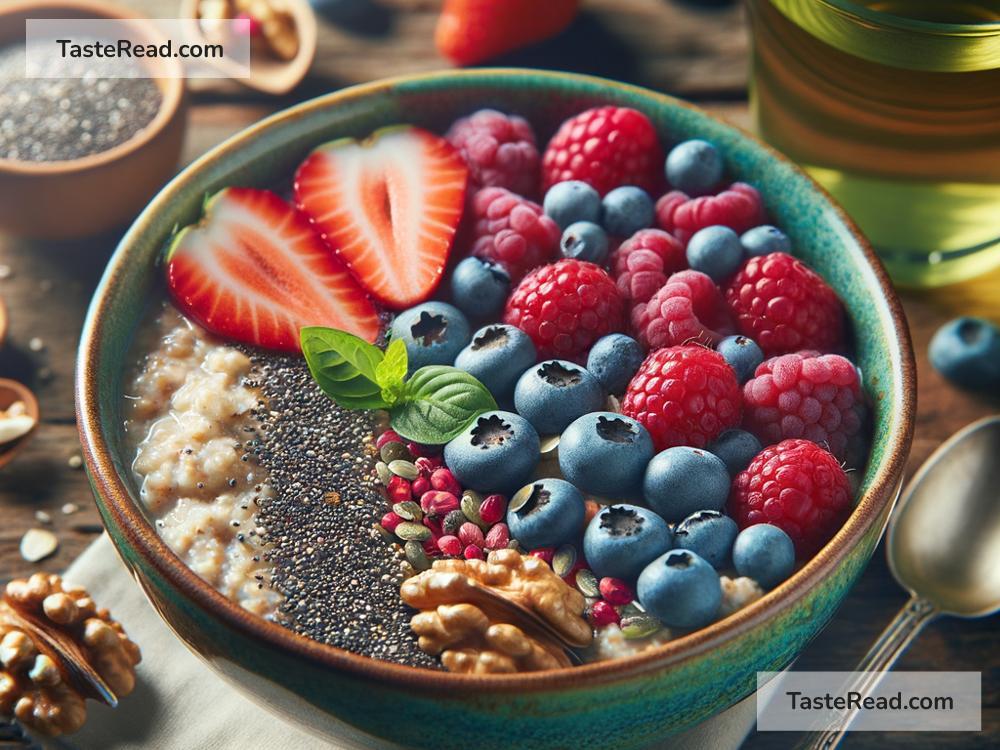Foods for Improving Cholesterol Levels: Simple Ways to Support Your Heart Health
Cholesterol is a natural substance in your body that helps build healthy cells, but when levels get too high, it can lead to heart disease and other health problems. While there are two types of cholesterol—LDL (or “bad” cholesterol) and HDL (or “good” cholesterol)—getting the balance right is key to a healthy heart. The good news is that what you eat can play a big role in controlling cholesterol levels. Let’s explore some foods that promote better cholesterol and overall heart health, explained plainly.
What’s the Deal With Cholesterol?
Cholesterol travels through your blood attached to proteins, forming “lipoproteins.” LDL carries cholesterol to your cells but can build up in your arteries if it’s too high, increasing the risk of heart disease or stroke. HDL, on the other hand, removes excess cholesterol from your bloodstream and takes it to your liver for disposal.
What you eat greatly influences LDL and HDL levels. Certain foods can lower harmful cholesterol and boost the healthy kind. This blog will guide you through heart-friendly foods that can help improve your cholesterol while keeping meals simple and delicious!
Fiber-Rich Foods
Fiber is a superstar for cholesterol management, especially soluble fiber. It helps trap LDL cholesterol in your digestive system before it’s absorbed into your bloodstream. Better yet, fiber keeps you full longer, which can assist with weight control—a key factor for heart health.
Here are some fiber-packed foods to add to your diet:
-
Oats: Start your day with a bowl of oatmeal or add oat-based products to your diet. Oats contain beta-glucan, a type of soluble fiber that can reduce LDL cholesterol.
-
Beans and Lentils: Black beans, kidney beans, chickpeas, and lentils are loaded with fiber and make great additions to soups, stews, and salads.
-
Apples, Pears, and Oranges: These fruits are high in soluble fiber called pectin. Enjoy them as snacks or in smoothies to improve cholesterol levels.
-
Barley: Like oats, barley contains beta-glucan and makes a hearty alternative to rice in recipes.
Healthy Fats
Contrary to what some may think, not all fats are bad. Healthy fats, like those from certain plants and fish, can actually help improve cholesterol levels.
-
Avocado: Avocados are packed with healthy monounsaturated fats, which can lower LDL cholesterol and raise HDL cholesterol. Add avocado slices to salads or spread mashed avocado on whole-grain toast.
-
Nuts: Almonds, walnuts, pecans, and pistachios are rich in heart-friendly fats and plant sterols that help lower LDL cholesterol. A small handful is all you need!
-
Olive Oil: Replace butter with olive oil for cooking or dress salads with heart-healthy homemade vinaigrette.
-
Fatty Fish: Salmon, mackerel, and tuna are high in omega-3 fatty acids, which can reduce triglycerides (a type of fat in the blood) and may improve HDL levels. Aim for at least two servings of fatty fish per week.
Foods Rich in Plant Sterols and Stanols
Plant sterols and stanols are natural compounds that prevent cholesterol from being absorbed by your body.
-
Fortified Foods: Some brands of margarine, yogurt, orange juice, and cereals fortify their products with sterols and stanols to support cholesterol health. These can be a convenient addition to meals.
-
Vegetables: While they’re not as concentrated in sterols as fortified products, vegetables like broccoli, spinach, and brussels sprouts are naturally good for your cholesterol. Plus, they’re loaded with nutrients and fiber!
Whole Grains
Whole grains like brown rice, quinoa, and whole wheat bread contain more fiber and nutrients than refined grains. Substituting white bread, pasta, or rice with whole-grain versions is an easy way to lower cholesterol levels over time.
Heart-Healthy Snacks and Spices
Snack time doesn’t have to sabotage your efforts. Instead, choose foods that actively help your cholesterol:
-
Dark Chocolate: High-quality dark chocolate with a high percentage of cocoa (70% or more) contains flavonoids that may improve cholesterol levels, so enjoy a small square as a treat.
-
Green Tea: Trade sugary drinks for green tea. It’s loaded with antioxidants that can benefit your heart and may help lower LDL cholesterol.
-
Garlic: Garlic has compounds that may reduce cholesterol levels. Add fresh garlic to dishes like pasta, veggies, and marinades for flavor and heart health.
What to Avoid
While eating the right foods is helpful, limiting or avoiding certain foods is equally important:
-
Fried and processed foods often contain trans fats, which significantly increase LDL cholesterol and lower HDL cholesterol.
-
Too much saturated fat (found in fatty cuts of meat, butter, and cheese) can also raise LDL cholesterol. Opt for lean cuts of meat and plant-based alternatives when possible.
Simple Tips for Cholesterol-Friendly Eating
Here are quick tips to make these foods part of your routine:
- Replace white rice with quinoa or barley.
- Snack on nuts or fruit instead of chips.
- Use olive oil for cooking instead of butter or margarine.
- Add beans to soups or stews for extra fiber.
- Eat fish at least twice a week instead of red meat.
Remember, improving cholesterol isn’t just about one meal—it’s about making consistent, small changes to your overall diet.
Conclusion
Heart-healthy eating doesn’t have to be complicated. Simple foods like oats, beans, avocado, nuts, and fatty fish can go a long way in improving cholesterol levels and supporting overall health. By balancing your plate with more whole, fiber-rich, and healthy fat-based foods, you’ll be giving your heart the care it deserves.
Start small and embrace gradual changes to your diet—you’ll feel the benefits in both your health and your everyday energy levels. Eating for your heart doesn’t just mean restrictions; it means adding flavorful and nutritious foods to fuel your body for life.


